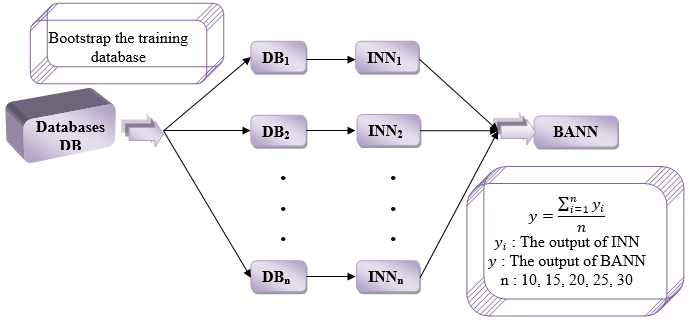
The forward osmosis process is currently more studied to be a replacement for another consuming-energy process, for this, many works show up the rejection of different molecules, energy consumption, and modeling of different objectives related to FO process. Our study consists to model the rejection of organic molecules (neutral and ionic) by FO process; however, this paper is the simultaneous applications of the single neural network based on quantitative- structure properties relationship (QSPR-SNN) and the bootstrap aggregated neural network (BANN) to predict the rejection of 53 OM. According to the results obtained, the coefficient correlation "R" is used to evaluate the performance of each model for the unseen data, the QSPR-BANN gives R value equal to 0.9909 higher than the value of the SNN which is 0.9401, the Root Mean Square Error of the QSPR-BANN is less than that of the QSPR-SNN with values equal to 0.5764% and 1.2826% respectively.
Total file downloads: 5